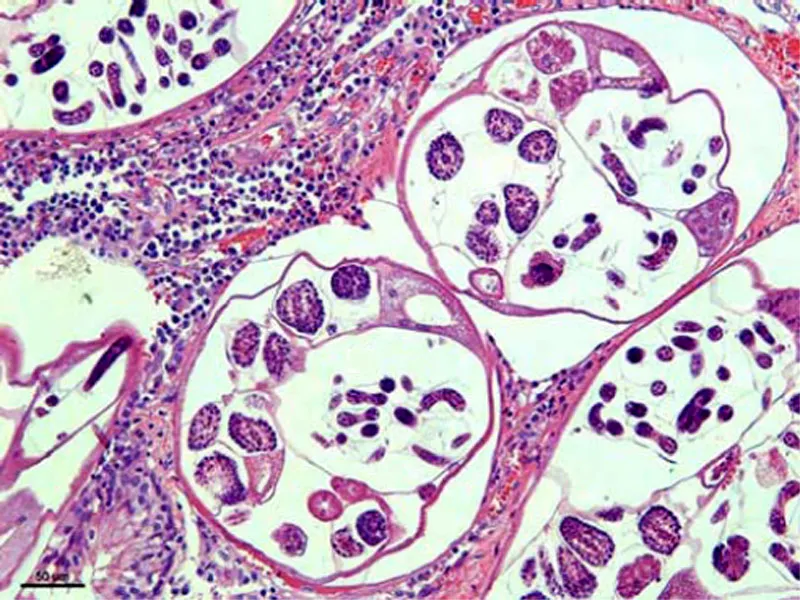Female Paraurethral Prostate Gland in Bitches
DOI:
https://doi.org/10.24070/bjvp.1983-0246.006018Keywords:
female prostate, histology, immunohistochemistry, PSAAbstract
Even though the presence of the female prostate has been reported in many species, including humans, bats and several rodents, it has many anatomical and histological variations. There is still plentiful discussion on the biological function of this organ. Many authors state that paraurethral ducts and glands are functional and homologous to the male prostate. The use of experimental models and a better knowledge of the female prostate gland in other species, can be useful to veterinary medicine as well as human medicine. Therefore the aim of this study is to check for the presence of this gland in female dogs of various breeds and age. For that purpose 25 urethras, from the bladder to the vulva, were collected, fixed in 10% neutral buffered formalin, routinely processed and sectioned into 4 slides of 4 μm, each with 40 μm gap between each set of 4 slides, using an automatic microtome and stained with Hematoxylin and Eosine (HE). The HE sections were evaluated for the presence of prostatic gland in the sample. Unstained tissue sections cut from paraffin blocks were marked with a polyclonal anti-PSA primary antibody. The prevalence of the gland was 32% (8/25). The structure of the paraurethral PSA-positive gland was acinar, organized in buds, with secretory epithelium varying from cubic to columnar; eccentric nuclei, with lose chromatin and a layer of basal cells, very similar to the male prostate were observed. In view of these characteristics, for the first time in the literature, was demonstrate that those glands may be considered as female prostate in dogs, as they are in other vertebrates.


